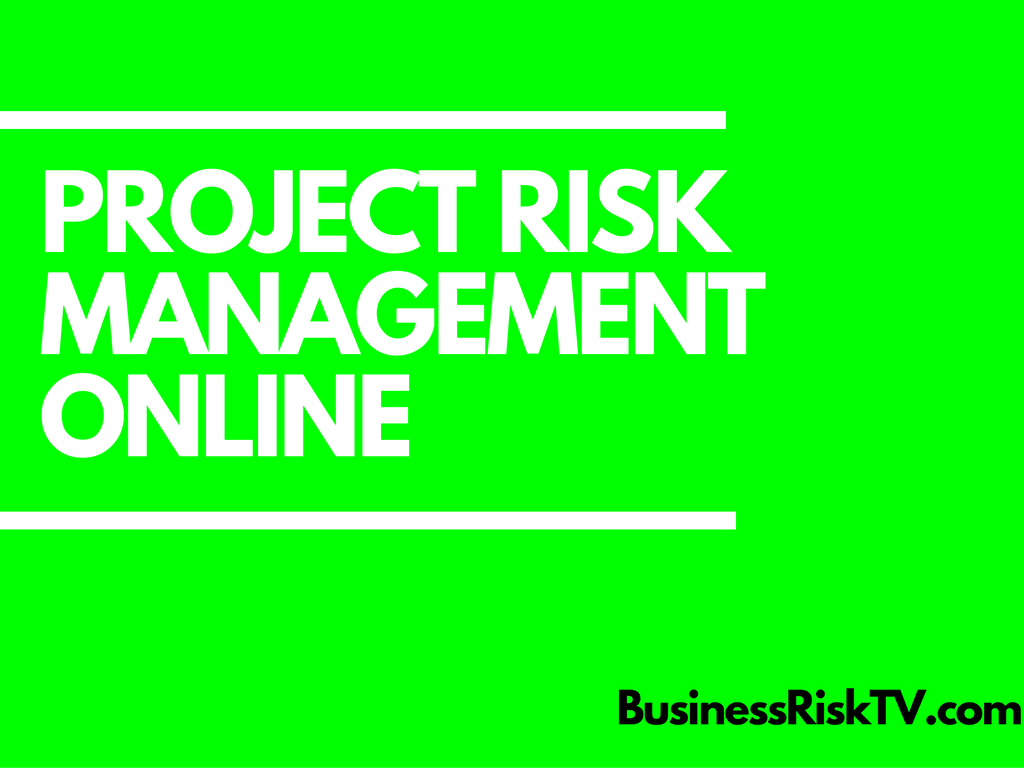Charting Uncharted Waters: Threats and Opportunities for Major Projects in 2024
As we navigate the tumultuous seas of 2023’s final quarter, anticipation for 2024 hums on the horizon. For project managers, it’s a siren song beckoning with both treacherous reefs and vibrant coral gardens. Major projects, with their potential for transformative impact, lie poised to rise from the depths, but their success hinges on a keen understanding of the lurking threats and blossoming opportunities. In this article, we’ll dive deep into the projected landscape of 2024, identifying the formidable obstacles and uncovering the hidden pearls that can propel project initiatives towards triumphant completion.
Navigating the Tempestuous Tides: Potential Threats in 2024
1. The Persistent Rumbles of Geopolitical and Economic Instability: The tectonic plates of international relations continue to shift, and the tremours are felt in project corridors worldwide. Trade wars, supply chain disruptions, and geopolitical tensions can pose logistical nightmares, budget crunches, and resource allocation challenges. As Harold Kerzner, renowned project management guru, aptly states, “It’s not just about managing tasks anymore; it’s about managing risk and uncertainty”. This rings true in today’s volatile climate, where unforeseen political or economic disruptions can send even the most meticulously planned projects careening off course.
2. The Looming Spectre of Inflationary Squalls: Inflation, the economic storm that has lashed many economies in 2023, shows no signs of abating in 2024 and could reignite. Rising costs of materials, labour, and technology can quickly swallow project budgets whole, jeopardising financial viability and forcing difficult decisions about scope reductions or delays. Echoing this concern, David Hillson, a leading figure in risk management, emphasises, “The biggest risk is usually the one you haven’t identified”. Project managers must stay vigilant, constantly reevaluating cost estimates and proactively seeking mitigating strategies like flexible sourcing or alternative technologies.
3. The Ebb and Flow of Talent Tides: Attracting and retaining skilled talent remains a persistent challenge, and 2024 is unlikely to be different. The post-pandemic “Great Resignation” continues to reshape the workforce, with skilled professionals prioritising flexibility, purpose, and work-life balance. As Marta Kosters, a prominent voice in organisational risk management, observes, “Without qualified people, even the best plans turn into castles in the air”. Project managers must be prepared to offer competitive compensation packages, foster inclusive work environments, and embrace remote and hybrid work models to secure the skilled workforce crucial for project success.
4. The Cyber Kraken Lurching in the Deep: Data breaches and cyberattacks continue to threaten the digital arteries of projects. As technology permeates every aspect of project execution, the attack surface for malicious actors expands. Echoing this concern, James D.P. Dey, a cybersecurity expert, warns, “In the digital age, risk isn’t just financial or operational; it’s reputational and existential”. Robust cybersecurity measures, including data encryption, access control, and incident response plans, are no longer an afterthought but a cornerstone of successful project management in 2024.
Riding the Waves of Change: Embracing Opportunities in 2024
Despite the lurking threats, 2024 also presents a treasure trove of opportunities for those willing to navigate the currents.
1. The Rising Tide of Sustainability: The global focus on environmental consciousness is creating a fertile ground for projects that promote sustainability. Renewable energy initiatives, green infrastructure development, and resource-efficient technologies are not just ethical imperatives but lucrative business propositions. As Andrew Kakabadse, a pioneer in responsible leadership, points out, “Sustainability isn’t a cost centre; it’s a value engine”. Project managers who integrate sustainability into their core strategies tap into a burgeoning market and attract like-minded investors and talent.
2. The Digital Wave Propelling Innovation: The rapid evolution of technology offers a powerful toolkit for project management. Artificial intelligence, automation, and data analytics can streamline processes, optimise resource allocation, and anticipate potential problems. As Peter Drucker, the management sage, once remarked, “The best way to predict the future is to create it”. Embracing digital tools empowers project managers to become proactive risk mitigators and navigate the uncertainties of 2024 with greater agility and confidence.
3. The Collaborative Currents Fostering Resilience: The need for effective collaboration has never been greater. Building strong partnerships with stakeholders, vendors, and communities creates a network of support that can weather the storms of uncertainty. As Margaret Mead, the renowned anthropologist, reminds us, “We don’t make progress by looking back and saying, ‘How wonderful it was in the old days’. We make progress by moving forward and saying, ‘Today is better than yesterday'”. By fostering collaboration and open communication, project managers can leverage diverse perspectives, tap into collective knowledge, and build resilience in the face of unforeseen challenges.
4. The Winds of Change Propelling Agility: 2024 demands agility. The ability to adapt to shifting landscapes, pivot strategies, and embrace experimentation will be a critical differentiator. As Winston Churchill, the wartime leader, stated, “The further backward you can look, the further forward you are likely to see”. Project managers who learn from past experiences, anticipate potential disruptions, and cultivate a culture of continuous improvement will be best equipped to ride the waves of change and steer their projects towards success.
Conclusion: Steering towards Success in 2024’s Uncharted Waters
The year 2024 looms large, a vast ocean fraught with both perilous reefs and uncharted islands of opportunity. By acknowledging the potential threats and harnessing the burgeoning opportunities, project managers can navigate these turbulent waters with courage, adaptability, and a proactive risk management approach. Remember, as Denis Waitley, the motivational speaker, encourages, “The only true risk is not taking any at all”. So, raise your sails, embrace the winds of change, and embark on a voyage of project success in 2024!
Actionable Strategies for Project Success in 2024:
Mitigating Threats:
- Embrace Scenario Planning: Don’t just plan for the best-case scenario.Conduct thorough scenario planning exercises to identify potential threats, assess their likelihood and impact, and develop contingency plans for each.
- Build Buffer Zones: Anticipate cost overruns and schedule delays by padding budgets and timelines with built-in buffers. This wiggle room will offer breathing space when unforeseen challenges arise.
- Strengthen Supply Chains: Diversify your supplier network, build strong relationships with key vendors, and explore alternative sourcing options to mitigate disruptions and ensure material availability.
- Invest in Cybersecurity: Implement robust cybersecurity measures like two-factor authentication, data encryption, and regular vulnerability assessments to safeguard sensitive project data from cyberattacks.
- Foster Open Communication: Create a culture of transparency and encourage open communication across all levels of the project team. Early identification of potential problems allows for swifter intervention and mitigation.
Capitalising on Opportunities:
- Embrace Green Innovation: Integrate sustainability principles into your project from the outset. Explore renewable energy solutions, utilise sustainable materials, and implement resource-efficient technologies to attract investors and tap into the growing green market.
- Leverage Digital Tools: Utilise artificial intelligence for predictive analytics, automate routine tasks with robotic process automation, and leverage data visualisation tools to gain deeper insights into project performance. This fosters better decision-making and optimises resource allocation.
- Build Strategic Partnerships: Collaborate with like-minded organisations, leverage government grants and incentives, and build strong relationships with local communities to create a network of support that can boost project success and unlock new opportunities.
- Invest in Talent Development: Attract and retain skilled professionals by offering competitive compensation packages, fostering inclusive work environments, and embracing flexible work models. Upskilling and reskilling existing team members also helps address talent gaps.
- Embrace Agility and Experimentation: Don’t be afraid to pivot your strategies and experiment with new approaches. Regularly monitor project progress, learn from failures, and adapt your plans as needed to navigate uncertainties and seize unexpected opportunities.
Remember: These are just starting points. Tailor these strategies to your specific project context, industry, and risk profile for maximum effectiveness. As Nelson Mandela aptly stated, “Education is the most powerful weapon which you can use to change the world.” In the context of project management, knowledge and proactive risk management are your weapons for success in 2024’s uncharted waters.
By implementing these actionable strategies, project managers can navigate the threats and capitalise on the opportunities that lie ahead in 2024, steering their projects towards success and making a positive impact on the world around them.
Additional Quotes for Diversified Perspectives:
On Proactive Risk Management:
- “A project is a temporary endeavour undertaken to create a unique product, service or result. Risk management is a systematic process of identifying, analysing, and responding to potential events that could negatively impact the project.” – Project Management Institute (PMI)
- “The key to successful risk management is to focus on the upside as well as the downside. It’s not just about avoiding problems, but also about seizing opportunities.” – David Hillson, risk management expert
- “It is better to anticipate even the most improbable dangers than to neglect them.” – Marcus Tullius Cicero, Roman philosopher and statesman
On Embracing Change and Agility:
- “The only sustainable competitive advantage is learning faster than the competition.” – Peter Drucker, management consultant
- “In times of change, learners inherit the earth, while the learned find themselves beautifully equipped to deal with a world that no longer exists.” – Eric Hoffer, American writer and philosopher
- “The greatest danger for most of us is not that our aim is too high and we miss it, but that it is too low and we reach it.” – Michelangelo, Italian Renaissance artist
On Collaboration and Building Support:
- “None of us is as smart as all of us.” – Ken Blanchard, author and leadership expert
- “Coming together is a beginning; keeping together is progress; working together is success.” – Henry Ford, American industrialist
- “The best way to predict the future is to create it.” – Peter Drucker, management consultant
On Embracing Innovation and Sustainability:
- “Innovation distinguishes between a leader and a follower.” – Steve Jobs, co-founder of Apple
- “The greatest threat to our planet is the belief that someone else will save it.” – Robert Swan, environmentalist
- “We can’t solve problems by using the same kind of thinking we used when we created them.” – Albert Einstein, theoretical physicist
Conclusion: Charting a Course for Success in 2024’s Uncharted Waters
As we stand on the precipice of 2024, the horizon ahead gleams with both the promise of transformative projects and the looming shadows of potential threats. For project managers, navigating this landscape hinges on one crucial factor: proactive risk management. By acknowledging the uncertainties that lie ahead, embracing adaptability, and implementing the strategies outlined throughout this article, we can chart a course towards successful project completion and leave our mark on a changing world.
Remember, the year 2024 demands not just meticulous planning but also the constant vigil of a risk management expert. We must become masters of scenario planning, building buffer zones against financial storms, and forging resilient supply chains. As Albert Einstein wisely observed, “The true sign of intelligence is not knowledge but the imagination.” Let us then, use our collective imagination to anticipate challenges, embrace digital tools, and build a network of partnerships that will propel our projects forward.
This is not the year to be hesitant or cautious. 2024 calls for bold ventures into the realm of sustainability, leveraging green technologies and embracing innovation. With agile strategies and a collaborative spirit, we can transform potential roadblocks into stepping stones of progress. As Nelson Mandela stated, “Education is the most powerful weapon which you can use to change the world.” In the context of project management, knowledge about risk and the willingness to act upon it are our weapons for success.
So, as the clock strikes midnight on December 31st, 2023, let us raise our sails, unfurl our banners of proactive risk management, and embark on a voyage of project success in the uncharted waters of 2024. The future belongs to those who dare to navigate its currents, and with courage, adaptability, and a keen eye on the horizon, we can ensure that our projects not only survive but thrive, leaving a lasting legacy of positive impact on the world around us.
Get help to make your project a success
Find Out More
Subscribe to project risk management forum
Contact Us
Read more business risk management articles
Contact Us



